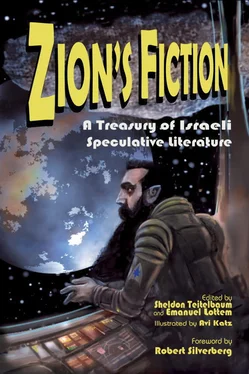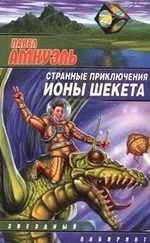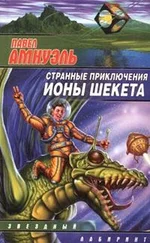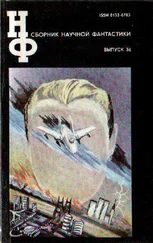A generation later, Ein Harod begat an Arab-Israeli response in Sayed Kashua’s Hebrew-language novel VaYehi Boker ( Let It Be Morning , 2004). [40] Sayed Kashua, Let It Be Morning (New York: Grove Press, Black Cat, 2006).
This book is set in the Arab-Israeli columnist’s hometown of Tira, to which the unnamed protagonist, who nevertheless shares much of his biography with his author, retreats after being terminated by a left-wing Israeli newspaper in Tel Aviv. Where once he waxed nostalgic, now Kashua, one of the small number among Israel’s 1.7 million Arabs who enjoyed an urban, middle-class existence, confronts his alienation from the narrowness, parochialism, and despondency of traditional Arab-Israeli hometown life. His protagonist’s sense of entrapment increases severalfold when the town is surrounded by a military force bearing orders to shoot anyone trying to cross their lines.
The reader may be excused for interpreting this predicament as a metaphor for, or even a symptom of, the fraught Israeli Arabs’ condition. But Kashua, whose earlier book, Aravim Rokdim ( Dancing Arabs , successfully adapted for film in 2014) earned acclaim in Israel and abroad, is never obvious or hidebound. The book concludes with the protagonist’s discovering, to his horror, that the encircling army belongs to a Palestinian Authority engaged in a land swap with the Israelis as part of a final peace settlement.
Tammuz’s Jeremiah’s Inn took a different, and to some Israelis no less alarming route to the apocalypse: an Ultra-Orthodox takeover of the nation. [41] Compare Robert A. Heinlein’s Revolt in 2100 , in which the United States is a theocracy ruled by a self-proclaimed Prophet.
The plot transpires in an Israel temporally farther afield: one dominated by an array of warring fundamentalist rabbinical courts headquartered in a physically, religiously, and socially fragmented Jerusalem. At once hilarious and horrifying, the book is written as a pastiche of rabbinical parables. While certainly readable by anyone literate in Hebrew, it is befittingly written in parts in the archaic Hebrew style traditionally (as well as currently) used in rabbinical circles for religious discourse. As this style has no equivalent in English (nor, perhaps, in any other language save Ecclesiastical Latin), the prospects for an English-language translation are not favorable. [42] Not that this would stop similarly themed novels from Amit Godenberg, Ir Nidachat [A city withdrawn], 2015; Yishai Sarid, Ha’Shlishi [The third one], also 2015; or Dror Burstein, Teet [Clay], 2016.
In 1987 author, playwright, and television host Yitzhak Ben-Ner published HaMal’achim Ba’im (The angels are coming), a novel, inspired by his 1977 short story “Aharey haGeshem” (After the rain),” [43] Yitshak Ben-Ner, “Aharey haGeshem” [After the rain] (Tel Aviv, 1977).
that melds elements of Ein Harod and Jeremiah’s Inn with Burgess’s Clockwork Orange . Ben-Ner depicts a Jewish state buckling under the boot of a fundamentalist government that enforces its will by directing pogroms against the secular residents of Tel Aviv and other coastal environs. The fantastic tropes incorporated into the text include a pair of imaginary dwarves; a policewoman of extraterrestrial origin; a protagonist who emerges from a severe beating with new healing powers brought on by the slow appearance on his forehead of a blue Star of David; a country no longer threatened by Arab animosity, but which has subsequently turned upon itself; and a high-tech sector that colludes with or deliberately ignores the centrifugal forces tearing society apart.
The reception extended to Ben-Ner’s opus is illustrative of the Israeli literati’s nearly implacable abhorrence of SF/F tropes. Initially, Gershon Shaked, already mentioned above as a primo literary gatekeeper, had touted Ben-Ner’s talent for “crafting of realistic plots and the accurate presentation of human situations.” But then, in 1987, Ben-Ner subverted his literary standing with HaMal’achim Ba’im , a hard-core science-fiction dystopia, leading to considerable wringing of writerly hands and gnashing of teeth. “How much longer will our readers… put up with the pranks of our writers?” asked one put-upon pundit. “Is it not time to turn our backs to a literature that treats us this way?” [44] Gershon Shaked, Gal Ahar Gal baSipporet haIvrit [Wave after wave in Hebrew narrative fiction] (Jerusalem, 1985), 168; Avraham Hagorni, “A Dwarf and a Half” [in Hebrew], Davar , November 20, 1987.
It would take years for this attitude to change, as an increasing number of books garnered greater public attention and acclaim. In 2008, for instance, Assaf Gavron published Hydromania , an ecothriller (translated into German, Dutch, and Italian) set in 2065 and depicting a desperately parched and dramatically truncated Jewish State facing imminent destruction by invading Arab forces. The book offers a handy example of the notion that Israelis are more open to genre forays if these address societal concerns. The Italian newspaper La Stampa , for example, observed that Hydromania “captures and unfolds the two fundamental obsessions of the country: the fear of being crushed by the immense Arab world and the fear of dying of thirst.”
In 2013, to offer another example, Yali Sobol, son of renowned Israeli playwright Yehoshua Sobol and lead singer of the prolific Israeli band Monica Sex, published Etzba’ot shel Psantran (A pianist’s fingers). The novel, yet another variation on the by now standard leftist Israeli dystopian theme—this one following the advent of yet another war—envisioned the tormenting by thought police of artists, Post-Post-Zionists, leftist columnists, kibbutz remnants, and the last remaining subscribers of Haaretz . [45] Yali Sobol, Etzba’ot shel Psantran [A pianist’s fingers] (Tel Aviv: Kinneret Zmora Bitan Dvir, 2012); Weingrad, “Riding Leviathan.”
For leftist columnists, kibbutz members, and Haaretz readers observing the country’s inexorable shift to the right, such scenarios bespeak very real anxieties.
Orly Castel-Bloom’s novel Dolly City (1992; translated in 1997) presents another, albeit more extreme, case. Dolly City, a nightmarish stand-in for Tel Aviv (named for the book’s eponymous protagonist-murderess), “the most demented city in the world,” is a singular creation. Here, explains Castel-Bloom—in a stripped-down style that many claim changed (some would say diluted) the tenor of Hebrew literature forever—everyone is on the run. And “since everyone is running, there’s always someone chasing them, and since there is someone chasing them, they catch them, and when they catch them, execute them, and throw them into the river.” [46] Orly Castel-Bloom, Dolly City (Dalkey Archive Press, 2010), 76–77.
Dolly, a surgeon, spares her son this fate, but only by inoculating him with poisonous microbes, carving a map of Israel on his back, and relieving a German baby of his kidney for transplant into her hapless boy. In no uncertain terms she strives to imprint her own Israeli nightmare on his still maturing flesh.
Castel-Bloom’s Grand Guignol gives way to what at first appears to be a more sober and less flamboyant engagement with the purely dystopian in Halakim Enoshiyim (2002; translated as Human Parts , 2004). [47] Orly Castel-Bloom, Human Parts (Boston: Verba Mundi Books, 2004).
The book appeared ten years later, during the Second Intifada, when Palestinians armed with explosive belts regularly rendered Israeli civilians into unidentifiable mounds of bloody flesh at the push of a vest button. In her scenario the government proves unable to contain the carnage, the prime minister collapses, and the cabinet succumbs to paralysis. Suddenly, the country falls prey to a triple-whammy: an outbreak of the “Saudi flu,” eight-foot snowfalls, and hailstones the size of baseballs. The weather, it turns out, was caused by an undersea volcanic eruption; the outbreak of disease, by an Arab biological assault. As ocean liners careen down Tel Aviv avenues (an image that would later resound in Lavie Tidhar and Nir Yaniv’s surrealistic novel The Tel Aviv Dossier ), the country teeters on the brink of dissolution.
Читать дальше






